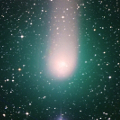
|
Now it is bright as 8.9 mag (July 19, Carlos Labordena). It is observable at 7.5-8 mag for a long time from 2022 to 2023. In the Northern Hemisphere, it stays observable in good condition until autumn. However, it is not observable at the high light from autumn to 2023 summer. In the Southern Hemisphere, it stays observable in good condition for a long time.
Date(TT) R.A. (2000) Decl. Delta r Elong. m1 Best Time(A, h)
July 23 16 42.04 -6 55.8 1.823 2.580 128 8.4 20:50 ( 5, 48)
July 30 16 30.26 -9 54.4 1.855 2.522 120 8.4 20:42 ( 15, 44)
|
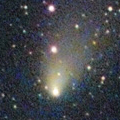
|
It brightened up to 10.9 mag from June to early July (July 4, Ken-ichi Kadota). Now it is not observable. In the Souther Hemisphere, it will appear in the morning sky at 12 mag in October. It will never be observable again in the Northern Hemisphere.
Date(TT) R.A. (2000) Decl. Delta r Elong. m1 Best Time(A, h)
July 23 9 40.84 20 19.9 1.964 1.087 21 9.7 20:50 (116, -2)
July 30 9 58.38 14 37.8 1.975 1.080 20 9.7 20:42 (112, -6)
|
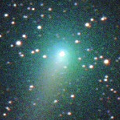
|
Now it is very bright as 9.8 mag (June 25, Marco Goiato). It will be fading gradually after this. In the Southen Hemisphere, it stays observable in good condition for a long time, although it becomes temporarily low in August. In the Northern Hemisphere, it is not observable until November when it fades down to 13 mag.
Date(TT) R.A. (2000) Decl. Delta r Elong. m1 Best Time(A, h)
July 23 9 27.36 -47 45.9 1.932 1.854 70 10.6 20:50 ( 53,-39)
July 30 9 35.14 -45 20.7 2.062 1.882 65 10.8 20:42 ( 57,-40)
|

|
Now it is 10.3 mag (June 21, Thomas Lehmann). In the Northern Hemisphere, it is already unobservable. In the Southern Hemisphere, it becomes unobservable temporarily from July to August.
Date(TT) R.A. (2000) Decl. Delta r Elong. m1 Best Time(A, h)
July 23 8 26.84 1 33.1 4.911 3.965 19 11.4 20:50 (114,-28)
July 30 8 34.09 0 24.8 4.945 3.993 18 11.5 3:29 (245,-31)
|
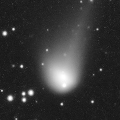
|
Now it is bright as 12.8 mag (July 20, Thomas Lehmann). It stays 12 mag for a while. It becomes unobservable from August to November in the Northern Hemisphere, or from September to December in the Southern Hemisphere.
Date(TT) R.A. (2000) Decl. Delta r Elong. m1 Best Time(A, h)
July 23 12 20.66 -3 44.1 4.562 4.258 66 12.1 20:50 ( 74, 15)
July 30 12 26.67 -3 27.8 4.663 4.263 60 12.2 20:42 ( 76, 13)
|
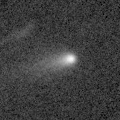
|
Now it is 12.3 mag (July 19, Thomas Lehmann). It brightens up to 11-12 mag from summer to autumn. It stays observable in good condition in the Southern Hemisphere. In the Northern Hemisphere, it becomes extremely low from August to September.
Date(TT) R.A. (2000) Decl. Delta r Elong. m1 Best Time(A, h)
July 23 11 52.11 4 54.0 1.240 1.085 56 12.5 20:50 ( 85, 15)
July 30 12 11.48 1 24.9 1.200 1.046 55 12.2 20:42 ( 82, 13)
|

|
Now it is 13.4 mag (July 7, Giuseppe Pappa). It will brighten up to 12.5 mag in summer. In the Southern Hemisphere, it stays observable in excellent condition for a long time. In the Northern Hemisphere, it is not observable until August.
Date(TT) R.A. (2000) Decl. Delta r Elong. m1 Best Time(A, h)
July 23 17 58.31 -57 56.3 2.197 3.007 135 12.5 21:53 ( 0, -3)
July 30 17 33.88 -54 34.6 2.237 2.995 130 12.5 21:01 ( 0, 1)
|
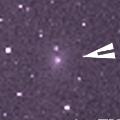
|
Now it is 12.2 mag (July 8, Osamu Miyazaki). It stays observable in good condition after this. But it will be fading gradually after this.
Date(TT) R.A. (2000) Decl. Delta r Elong. m1 Best Time(A, h)
July 23 1 27.30 4 10.3 1.571 1.987 98 12.5 3:22 (310, 48)
July 30 1 33.12 4 20.3 1.536 2.027 103 12.7 3:29 (319, 52)
|
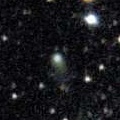
|
Now it is bright as 12.6 mag (July 22, Osamu Miyazaki). It will approach to Earth down to 0.29 a.u. in 2023 February, and it is expected to brighten up to 5 mag. In the Northern Hemisphere, it stays observable in excellent condition. In the Southern Hemisphere, it becomes unobservable from late September to early February.
Date(TT) R.A. (2000) Decl. Delta r Elong. m1 Best Time(A, h)
July 23 18 0.44 35 35.9 2.134 2.743 116 13.0 21:54 (180, 89)
July 30 17 40.20 35 54.1 2.119 2.663 111 12.9 21:07 (180, 89)
|

|
It brightened up to 12.8 mag from late June to early July (June 23, Thomas Lehmann). It is not observable after this.
Date(TT) R.A. (2000) Decl. Delta r Elong. m1 Best Time(A, h)
July 23 6 44.28 18 22.4 1.513 0.655 19 13.0 3:22 (243, -5)
July 30 7 21.69 17 4.6 1.614 0.716 17 13.9 3:29 (244, -6)
|
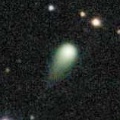
|
Now it is 13.2 mag (July 16, Thomas Lehmann). It is expected to brighten up to 10 mag in 2023. In the Northern Hemisphere, it stays observable in good condition until 2023 autumn. In the Southern Hemipshere, it stays unobservable until 2023 summer.
Date(TT) R.A. (2000) Decl. Delta r Elong. m1 Best Time(A, h)
July 23 9 59.50 53 46.7 4.574 3.849 39 13.2 20:50 (142, 20)
July 30 10 2.84 53 22.7 4.532 3.792 38 13.1 20:42 (143, 18)
|
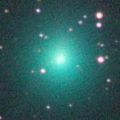
|
Now it is very bright as 11.3 mag (July 5, Thomas Lehmann). It will be fading after this. In the Southern Hemisphere, it stays observable in good condition for a long time. In the Northern Hemisphere, it will never be observable again.
Date(TT) R.A. (2000) Decl. Delta r Elong. m1 Best Time(A, h)
July 23 4 16.11 -34 31.2 1.915 1.966 77 13.1 3:22 (307, -7)
July 30 4 27.49 -39 40.6 1.928 2.051 82 13.6 3:29 (314, -7)
|

|
Now it is 13.2 mag (July 19, Thomas Lehmann). It stays observable at 13-14 mag for a while.
Date(TT) R.A. (2000) Decl. Delta r Elong. m1 Best Time(A, h)
July 23 18 33.61 -32 22.7 2.086 3.041 155 13.3 22:29 ( 0, 23)
July 30 18 29.79 -32 27.6 2.129 3.042 148 13.3 21:58 ( 0, 23)
|
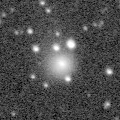
|
Now it is 13.5 mag (July 19, Michael Jager). It is expected to brighten up to 11 mag in 2023. In the Northern Hemisphere, it stays observable in good condition until November. But it becomes unobservable after that. In the Southern Hemisphere, it stays observable in good condition for a long time, although it becomes unobservable temporarily from November to January.
Date(TT) R.A. (2000) Decl. Delta r Elong. m1 Best Time(A, h)
July 23 17 43.66 10 17.3 3.371 4.134 133 13.4 21:39 ( 0, 65)
July 30 17 37.02 8 31.3 3.384 4.092 128 13.4 21:05 ( 0, 63)
|
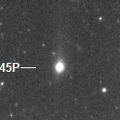
|
Now it is 11.2 mag (July 4, Ken-ichi Kadota). It is brighter than originally predicted by 3 mag. It brightened up to 6.7 mag in early May (May 10, Mike Olason). Now it is fading rapidly. The condition is very bad in this apparition. It is observable only in the extremely low sky from mid May to mid July in the Northern Hemisphere, or from early June to early August in the Southern Hemisphere.
Date(TT) R.A. (2000) Decl. Delta r Elong. m1 Best Time(A, h)
July 23 10 19.68 13 31.1 2.350 1.584 32 13.4 20:50 (106, 1)
July 30 10 37.89 11 47.5 2.468 1.671 30 13.9 20:42 (104, 0)
|
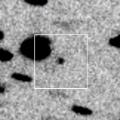
|
Now it is 14.2 mag (July 3, Thomas Lehmann). It stays 13-14 mag for a while. It is observable in excellent condition in the Southern Hemisphere. It locates somewhat low in the Northern Hemisphere.
Date(TT) R.A. (2000) Decl. Delta r Elong. m1 Best Time(A, h)
July 23 23 12.94 -24 13.1 1.158 2.025 137 13.6 3:12 ( 0, 31)
July 30 23 9.77 -25 14.5 1.155 2.063 143 13.8 2:41 ( 0, 30)
|
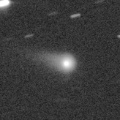
|
Now it is 13.8 mag (July 2, Michael Jager). It is expected to brighten up to 12 mag in 2023. In the Northern Hemisphere, it stays observable in good condition for a long time. In the Southern Hemisphere, it locates extremely low in 2022, but it will be observable in good condition in 2023.
Date(TT) R.A. (2000) Decl. Delta r Elong. m1 Best Time(A, h)
July 23 13 30.57 31 5.8 4.456 4.253 71 13.7 20:50 ( 99, 48)
July 30 13 27.92 29 26.3 4.521 4.222 66 13.7 20:42 (100, 42)
|

|
Now it is not observable. It will appear in the morning sky in September in the Northern Hemisphere, or in November in the Southern Hemisphere. It will brighten up to 11.5 mag in winter
Date(TT) R.A. (2000) Decl. Delta r Elong. m1 Best Time(A, h)
July 23 7 26.81 20 48.7 3.105 2.110 9 14.2 3:22 (235,-11)
July 30 7 43.32 20 16.1 3.051 2.071 12 14.0 3:29 (238, -8)
|

|
Appearing in the morning sky.
Date(TT) R.A. (2000) Decl. Delta r Elong. m1 Best Time(A, h)
July 23 6 9.97 29 11.7 6.883 6.007 28 14.0 3:22 (240, 8)
July 30 6 15.73 29 10.0 6.829 6.009 33 14.0 3:29 (243, 13)
|
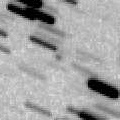
|
It is expected to brighten up to 13-14 mag in July. But actually, it is not detected, fainter than 17 mag (July 10, Martin Masek). In the Southern Hemisphere, it stays observable in good condition after this. In the Northern Hemisphere, it is not observable at all.
Date(TT) R.A. (2000) Decl. Delta r Elong. m1 Best Time(A, h)
July 23 10 17.45 -50 30.3 1.269 1.424 76 14.1 20:50 ( 47,-31)
July 30 11 11.41 -46 22.8 1.390 1.477 73 14.4 20:42 ( 49,-24)
|
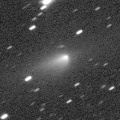
|
Now it is 13.8 mag (July 19, Thomas Lehmann). It becomes too low to observe in mid August in the Northern Hemisphere, or in late September in the Southern Hemisphere.
Date(TT) R.A. (2000) Decl. Delta r Elong. m1 Best Time(A, h)
July 23 11 39.53 2 28.5 2.626 2.197 54 14.1 20:50 ( 85, 11)
July 30 11 52.06 0 58.6 2.687 2.199 51 14.2 20:42 ( 85, 8)
|

|
The condition is worst in this apparition. It is not observable at all.
Date(TT) R.A. (2000) Decl. Delta r Elong. m1 Best Time(A, h)
July 23 9 13.91 16 46.3 2.205 1.260 15 15.0 20:50 (118, -9)
July 30 9 38.22 15 24.0 2.162 1.213 15 14.4 20:42 (116, -9)
|

|
Now it is 14.5 mag (June 19, ATLAS South Africa). It was expected to brighten up to 13 mag in spring. But actually, it is fainter than originally expected. In the Southern Hemisphere, it stays observable in good condition for a long time. In the Northern Hemisphere, it is not observable until autumn.
Date(TT) R.A. (2000) Decl. Delta r Elong. m1 Best Time(A, h)
July 23 6 45.87 -39 13.9 3.490 3.151 62 15.0 3:22 (297,-36)
July 30 6 47.33 -39 31.4 3.480 3.159 63 15.0 3:29 (300,-30)
|
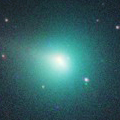
|
It brightened up to 8.8 mag from winter to early spring (Jan. 31, Chris Wyatt). Now it is fading. It has already faded down to 13.5 mag (July 10, Ken-ichi Kadota). It locates extremely low in the Southern Hemisphere. It will be unobservable in August in the Northern Hemisphere.
Date(TT) R.A. (2000) Decl. Delta r Elong. m1 Best Time(A, h)
July 23 10 31.09 32 25.5 3.033 2.265 34 15.1 20:50 (120, 14)
July 30 10 46.38 30 56.3 3.115 2.317 31 15.3 20:42 (119, 12)
|

|
Now it is 15.2 mag (June 28, S. L. Ferreira). It stays at 15-16 mag for a long time. In the Southern Hemisphere, it stays observable in excellent condition for a long time. In the Northern Hemiphere, it is not observable after this.
Date(TT) R.A. (2000) Decl. Delta r Elong. m1 Best Time(A, h)
July 23 14 33.84 -49 41.6 4.958 5.380 109 15.3 20:50 ( 22, 0)
July 30 14 29.43 -49 25.4 5.079 5.400 103 15.4 20:42 ( 25, -2)
|
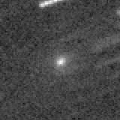
|
Now it is bright as 15.0 mag (July 19, Michael Jager). It is observable at 15-16 mag in good condition from July to August.
Date(TT) R.A. (2000) Decl. Delta r Elong. m1 Best Time(A, h)
July 23 18 26.85 6 52.8 0.913 1.830 143 15.6 22:19 ( 0, 62)
July 30 17 40.85 10 22.3 0.972 1.787 128 15.5 21:06 ( 0, 66)
|
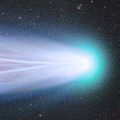
|
It brightened up to 3 mag from mid December to late December. Now it is fading. It has already faded down to 13.4 mag (May 28, Thomas Lehmann). It is observable in good condition in the Southern Hemisphere. It is getting observable again also in the Northern Hemisphere.
Date(TT) R.A. (2000) Decl. Delta r Elong. m1 Best Time(A, h)
July 23 16 9.77 -27 3.5 2.571 3.267 125 15.7 20:50 ( 11, 27)
July 30 16 4.34 -25 55.3 2.760 3.351 117 16.0 20:42 ( 18, 27)
|
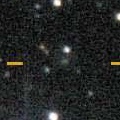
|
It is expected to brighten up to 12 mag from winter to summer in 2023. But actually, it is very faint as 18.1 mag (July 16, B. T. Bolin, Z. T. F. Collaboration). In the Northern Hemisphere, it stays observable in good condition until 2023 spring. It will be observable in good condition after August also in the Southern Hemisphere.
Date(TT) R.A. (2000) Decl. Delta r Elong. m1 Best Time(A, h)
July 23 4 33.06 38 31.1 4.339 3.760 49 15.9 3:22 (242, 30)
July 30 4 40.14 38 9.7 4.199 3.701 54 15.8 3:29 (244, 35)
|

|
Now it is 18.0 mag (June 27, iTelescope Observatory, Siding Spring). It is expected to brighten very rapidly up to 11-12 mag in winter, and it will be observable in excellent condition.
Date(TT) R.A. (2000) Decl. Delta r Elong. m1 Best Time(A, h)
July 23 4 22.04 13 8.5 2.525 2.101 54 16.0 3:22 (268, 20)
July 30 4 37.53 13 29.8 2.441 2.075 57 15.8 3:29 (270, 24)
|
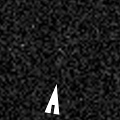
|
Now it is 16.9 mag (July 1, Ken-ichi Kadota). It is expected to brighten up to 15 mag in autumn, and it will be observable in good condition.
Date(TT) R.A. (2000) Decl. Delta r Elong. m1 Best Time(A, h)
July 23 1 3.52 5 40.6 1.780 2.240 103 16.0 3:22 (316, 53)
July 30 1 11.31 6 4.4 1.693 2.224 107 15.9 3:29 (325, 57)
|
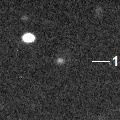
|
Appearing in the morning sky. It will brighten up to 15 mag from summer to winter, and it stays observable in good condition. It locates somwwhat low in the Southern Hemisphere.
Date(TT) R.A. (2000) Decl. Delta r Elong. m1 Best Time(A, h)
July 23 5 7.17 18 49.0 2.977 2.332 42 16.0 3:22 (257, 14)
July 30 5 21.35 19 10.8 2.920 2.329 45 15.9 3:29 (259, 18)
|
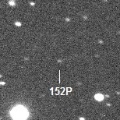
|
Now it is 16.7 mag (June 30, Ken-ichi Kadota). It will be fading gradually after this. It locates somewhat low in the Northern Hemisphere.
Date(TT) R.A. (2000) Decl. Delta r Elong. m1 Best Time(A, h)
July 23 19 33.28 -27 6.6 2.254 3.258 169 16.2 23:29 ( 0, 28)
July 30 19 28.79 -27 30.2 2.288 3.270 162 16.2 22:57 ( 0, 28)
|
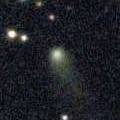
|
Now it is 15.9 mag (July 9, ATLAS-MLO, Mauna Loa). It stays observable at 16 mag from 2021 to 2022. It locates low in the Southern Hemisphere.
Date(TT) R.A. (2000) Decl. Delta r Elong. m1 Best Time(A, h)
July 23 15 23.05 42 32.4 5.155 5.243 89 16.4 20:50 (120, 71)
July 30 15 23.05 42 10.4 5.240 5.267 85 16.5 20:42 (116, 67)
|

|
Now it is 16.3 mag (July 1, Ken-ichi Kadota). It brightened up to 14 mag from 2020 to 2021. Now it is fading slowly. It is observable at 16.5-17 mag in 2022.
Date(TT) R.A. (2000) Decl. Delta r Elong. m1 Best Time(A, h)
July 23 0 51.68 -14 37.1 3.293 3.801 112 16.5 3:22 (333, 36)
July 30 0 52.48 -15 3.7 3.225 3.819 118 16.5 3:29 (343, 38)
|
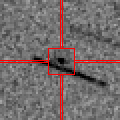
|
Now it is 17.8 mag (July 3, Michael Jager). It will brighten rapidly up to 15 mag in September, and it will be observable in good condition.
Date(TT) R.A. (2000) Decl. Delta r Elong. m1 Best Time(A, h)
July 23 0 26.82 23 28.6 1.041 1.613 103 16.7 3:22 (305, 72)
July 30 0 41.88 22 0.8 0.965 1.596 107 16.5 3:29 (321, 74)
|

|
It brightened up to 12.3 mag from spring to summer in 2021 (June 15, 2021, Marco Goiato). Now it is fading. It has already faded down to 15.5 mag (June 29, ATLAS-MLO, Mauna Loa).
Date(TT) R.A. (2000) Decl. Delta r Elong. m1 Best Time(A, h)
July 23 12 0.72 30 9.2 5.858 5.310 53 16.5 20:50 (108, 29)
July 30 12 1.85 29 51.3 5.982 5.354 47 16.6 20:42 (110, 26)
|
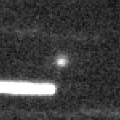
|
Now it is 16.7 mag (July 19, Michael Jager). It brightens up to 16.5 mag in July. But it will fade out quickly.
Date(TT) R.A. (2000) Decl. Delta r Elong. m1 Best Time(A, h)
July 23 19 24.86 -17 54.4 0.618 1.628 169 16.6 23:12 ( 0, 37)
July 30 17 54.95 -16 53.6 0.664 1.591 141 16.6 21:17 ( 0, 38)
|

|
It brightened up to 14 mag in 2021. Now it is fading. It has already faded down to 16.5 mag (July 3, Thomas Lehmann). It is observable at 16-17 mag in 2022.
Date(TT) R.A. (2000) Decl. Delta r Elong. m1 Best Time(A, h)
July 23 0 10.89 12 27.8 5.375 5.832 111 16.6 3:22 (331, 65)
July 30 0 8.96 13 1.4 5.313 5.868 118 16.6 3:29 (353, 68)
|

|
Now it is 16.9 mag (June 17, Giuseppe Pappa). It will brighten up to 16.5 mag in July. In 2022, it stays observable for a long time.
Date(TT) R.A. (2000) Decl. Delta r Elong. m1 Best Time(A, h)
July 23 1 57.77 18 32.9 0.400 1.065 85 16.7 3:22 (286, 52)
July 30 2 47.47 22 40.1 0.411 1.029 80 16.8 3:29 (277, 51)
|

|
It brightened up to 14.2 mag in 2021 summer (July 18, 2021, Taras Prystavski). Now it is fading. It has already faded down to 16.7 mag (July 9, ATLAS Chile). In the Southern Hemisphere, it stays observable in good condition for a long time. It locates somewhat low in the Northern Hemisphere.
Date(TT) R.A. (2000) Decl. Delta r Elong. m1 Best Time(A, h)
July 23 2 20.63 -25 7.8 4.795 4.999 95 16.8 3:22 (319, 17)
July 30 2 21.39 -25 16.9 4.748 5.040 100 16.8 3:29 (325, 21)
|

|
Now it is 16.2 mag (June 30, Ken-ichi Kadota). It will be observable at 16.5 mag in good condition from summer to autumn.
Date(TT) R.A. (2000) Decl. Delta r Elong. m1 Best Time(A, h)
July 23 2 40.91 21 45.1 2.252 2.224 75 16.8 3:22 (273, 45)
July 30 2 51.47 22 43.0 2.193 2.241 79 16.8 3:29 (276, 50)
|
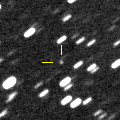
|
Now it is 17.1 mag (Apr. 17, ATLAS South Africa). It will brighten up to 14 mag in 2023. In the Southern Hemisphere, it stays observable in good condition for a long time although it became extremely low temporarily in June. In the Northern Hemisphere, it is not observable until late August.
Date(TT) R.A. (2000) Decl. Delta r Elong. m1 Best Time(A, h)
July 23 6 36.23 -9 49.5 5.083 4.322 37 16.9 3:22 (268,-21)
July 30 6 38.10 -10 5.0 4.998 4.281 40 16.8 3:29 (273,-14)
|

|
Now it is 18.4 mag (July 14, B. T. Bolin, Z. T. F. Collaboration). It stays observable at 16 mag from summer to winter. In the Southern Hemisphere, it locates low until October.
Date(TT) R.A. (2000) Decl. Delta r Elong. m1 Best Time(A, h)
July 23 5 6.06 30 14.6 2.255 1.648 42 16.9 3:22 (246, 20)
July 30 5 29.62 30 18.0 2.206 1.629 43 16.8 3:29 (248, 22)
|

|
Now it is 16.0 mag (July 8, Ken-ichi Kadota). It will brighten up to 15 mag in autumn, and it will be observable in excellent condition.
Date(TT) R.A. (2000) Decl. Delta r Elong. m1 Best Time(A, h)
July 23 2 15.20 4 52.7 2.407 2.558 86 17.0 3:22 (297, 40)
July 30 2 22.61 6 3.5 2.306 2.538 91 16.9 3:29 (303, 46)
|
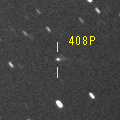
|
Appearing in the morning sky. It will be observable at 16 mag in excellent condition from autumn to winter.
Date(TT) R.A. (2000) Decl. Delta r Elong. m1 Best Time(A, h)
July 23 3 47.76 10 3.6 3.822 3.486 63 17.0 3:22 (275, 25)
July 30 3 55.32 9 55.1 3.731 3.482 68 16.9 3:29 (280, 31)
|
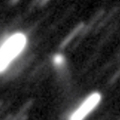
|
Now it is 16.1 mag (June 12, ATLAS-MLO, Mauna Loa). It was observed at 15 mag in 2021. Now it is fading. It stays observable at 16-17 mag for a while in 2022.
Date(TT) R.A. (2000) Decl. Delta r Elong. m1 Best Time(A, h)
July 23 17 57.56 30 38.7 4.901 5.484 120 17.0 21:53 ( 0, 86)
July 30 17 53.77 30 43.1 4.971 5.509 117 17.1 21:21 ( 0, 86)
|
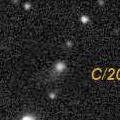
|
Now it is 17.3 mag (July 18, ATLAS-MLO, Mauna Loa). It stays observable at 17-18 mag for a long time until 2024.
Date(TT) R.A. (2000) Decl. Delta r Elong. m1 Best Time(A, h)
July 23 13 17.90 4 45.2 8.997 8.817 76 17.2 20:50 ( 72, 32)
July 30 13 17.28 4 43.4 9.114 8.817 69 17.2 20:42 ( 75, 28)
|
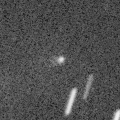
|
Now it is 16.9 mag (July 4, Ken-ichi Kadota). It is observable in excellent condition. But it will be fading rapidly, and it will be fainter than 18 mag in August.
Date(TT) R.A. (2000) Decl. Delta r Elong. m1 Best Time(A, h)
July 23 15 4.08 -17 1.7 0.799 1.479 108 17.2 20:50 ( 31, 32)
July 30 15 16.79 -21 9.5 0.845 1.488 105 17.4 20:42 ( 30, 27)
|
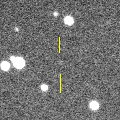
|
It is expected to brighten up to 7 mag in early 2024. In the Southern Hemisphere, it stays observable in good condition for a long time. It will appear in the morning sky in mid August also in the Northern Hemisphere, but it stays low in 2022.
Date(TT) R.A. (2000) Decl. Delta r Elong. m1 Best Time(A, h)
July 23 5 46.58 -19 38.5 7.079 6.515 52 17.4 3:22 (283,-16)
July 30 5 50.98 -20 6.4 6.969 6.455 55 17.3 3:29 (288,-10)
|

|
Now it is 16.9 mag (June 22, B. Koch). Fading slowly. In the Northern Hemisphere, it stays observable in good condition for a long time. In the Southern Hemisphere, it is not observable after this.
Date(TT) R.A. (2000) Decl. Delta r Elong. m1 Best Time(A, h)
July 23 17 50.42 68 31.3 9.266 9.283 87 17.3 21:44 (180, 56)
July 30 17 42.08 68 21.4 9.284 9.296 87 17.4 21:08 (180, 57)
|
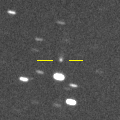
|
Now it is 17.7 mag (July 9, ATLAS Chile). It will brighten up to 16 mag in 2023. In the Southern Hemisphere, it stays observable in good condition for a long time. In the Northern Hemisphere, it will never be observable again.
Date(TT) R.A. (2000) Decl. Delta r Elong. m1 Best Time(A, h)
July 23 10 15.84 -21 22.0 4.304 3.764 51 17.4 20:50 ( 77,-20)
July 30 10 22.60 -22 18.6 4.325 3.732 48 17.4 20:42 ( 78,-23)
|
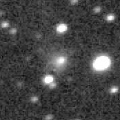
|
Now it is 17.3 mag (July 6, Catalina Sky Survey). It was observed at 16 mag from 2020 to 2021. Now it is fading. It will be fainter than 18 mag in autumn.
Date(TT) R.A. (2000) Decl. Delta r Elong. m1 Best Time(A, h)
July 23 22 5.42 12 32.7 6.143 6.914 136 17.4 2:04 ( 0, 68)
July 30 22 0.96 11 51.6 6.100 6.938 142 17.4 1:33 ( 0, 67)
|
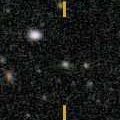
|
Now it is 17.4 mag (July 8, J.-G. Bosch, J. Nicolas, F. Kugel). It is observable at 17 mag from spring to summer. In the Northern Hemisphere, it becomes low in summer.
Date(TT) R.A. (2000) Decl. Delta r Elong. m1 Best Time(A, h)
July 23 12 22.96 -0 1.2 2.221 2.023 65 17.5 20:50 ( 76, 18)
July 30 12 33.59 -2 24.9 2.284 2.020 62 17.5 20:42 ( 76, 15)
|
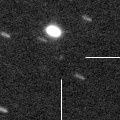
|
It is expected to brighten up to 8 mag in 2023 July. In 2022, it stays observable in good condition while the comet will be brightening gradually.
Date(TT) R.A. (2000) Decl. Delta r Elong. m1 Best Time(A, h)
July 23 3 33.05 7 44.2 4.965 4.670 67 17.7 3:22 (280, 27)
July 30 3 33.96 7 22.5 4.782 4.605 73 17.5 3:29 (286, 33)
|
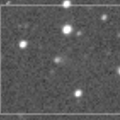
|
It was observed at 17 mag in 2021. It is observable at 17-18 mag also in 2022.
Date(TT) R.A. (2000) Decl. Delta r Elong. m1 Best Time(A, h)
July 23 2 48.79 6 26.7 3.425 3.368 78 17.6 3:22 (289, 35)
July 30 2 52.56 7 18.6 3.345 3.387 83 17.6 3:29 (294, 41)
|
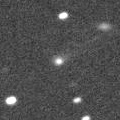
|
Now it is 17.3 mag (July 18, ATLAS-MLO, Mauna Loa). It will be unobservable in September.
Date(TT) R.A. (2000) Decl. Delta r Elong. m1 Best Time(A, h)
July 23 13 19.00 -8 48.0 4.760 4.722 81 17.6 20:50 ( 60, 23)
July 30 13 22.68 -9 12.9 4.865 4.724 76 17.6 20:42 ( 62, 20)
|

|
It stays observable at 17-18 mag in 2022. It locates somewhat low in the Southern Hemisphere.
Date(TT) R.A. (2000) Decl. Delta r Elong. m1 Best Time(A, h)
July 23 2 52.28 29 18.3 5.657 5.411 70 17.7 3:22 (262, 46)
July 30 2 50.02 29 28.3 5.540 5.419 77 17.6 3:29 (266, 53)
|

|
It brightened up to 17 mag in early 2022. Now it is fading. It will be fainter than 18 mag in autumn. It is not observable in the Northern Hemisphere.
Date(TT) R.A. (2000) Decl. Delta r Elong. m1 Best Time(A, h)
July 23 7 16.28 -44 11.2 5.991 5.645 65 17.7 3:22 (301,-43)
July 30 7 20.15 -45 4.6 5.999 5.662 65 17.7 3:29 (304,-37)
|

|
It approached to Sun down to 0.14 a.u. on May 15. But it was not observable around that time. Appearing in the morning sky. In the Northern Hemisphere, it stays observable at 17-18 mag in good condition from July to November. In the Southern Hemisphere, it stays extremely low.
Date(TT) R.A. (2000) Decl. Delta r Elong. m1 Best Time(A, h)
July 23 3 53.66 36 57.8 1.690 1.425 57 17.7 3:22 (247, 36)
July 30 4 0.35 38 1.0 1.683 1.506 62 17.8 3:29 (248, 42)
|
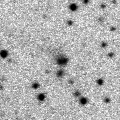
|
Now it is 18.0 mag (July 17, A. Diepvens). It started fading before the perihelion passage. It was predicted to stay at 16 mag for a long time. But actually, it will be fainter than 18 mag in autumn. In the Northern Hemisphere, it stays observable in good condition for a long time. In the Southern Hemisphere, it is not observable until 2023.
Date(TT) R.A. (2000) Decl. Delta r Elong. m1 Best Time(A, h)
July 23 17 56.84 80 9.0 3.910 3.833 78 17.7 21:48 (180, 45)
July 30 17 37.05 77 56.7 3.887 3.845 80 17.7 21:02 (180, 47)
|
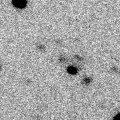
|
Now it is 17.5 mag (July 4, Michael Jager). In the Northern Hemisphere, it stays observable at 17 mag in good condition for a long time until winter. In the Southern Hemisphere, it stays extremely low for a long time.
Date(TT) R.A. (2000) Decl. Delta r Elong. m1 Best Time(A, h)
July 23 4 45.81 39 32.4 3.371 2.782 47 17.8 3:22 (239, 28)
July 30 5 1.52 40 28.2 3.310 2.777 50 17.8 3:29 (240, 32)
|
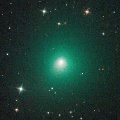
|
It brightened up to 9.5 mag in early summer in 2021 (June 27, Marco Goiato). Now it is fading. It has already faded down to 17.3 mag (July 18, G. van Buitenen, J.-C. Merlin). In the Northern Hemisphere, it stays extremely low.
Date(TT) R.A. (2000) Decl. Delta r Elong. m1 Best Time(A, h)
July 23 23 21.29 -38 13.2 3.781 4.553 134 17.8 3:20 ( 0, 17)
July 30 23 18.58 -39 3.3 3.794 4.612 139 17.9 2:50 ( 0, 16)
|
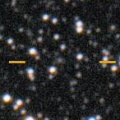
|
Now it is 16.4 mag (June 30, Kunihiro Shima). It was observed at 17 mag in 2021. It is observable at 17-18 mag in 2022.
Date(TT) R.A. (2000) Decl. Delta r Elong. m1 Best Time(A, h)
July 23 23 28.74 0 23.1 3.515 4.203 126 17.8 3:22 (357, 55)
July 30 23 27.92 0 20.8 3.447 4.212 133 17.8 2:59 ( 0, 55)
|
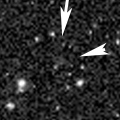
|
Now it is 17.3 mag (June 27, ATLAS South Africa). Very far object. It stays 18 mag for a long time from 2021 to 2026. In the Southern Hemisphere, it stays observable in good condition for a long time. In the Northern Hemisphere, it is not observable at all.
Date(TT) R.A. (2000) Decl. Delta r Elong. m1 Best Time(A, h)
July 23 7 54.14 -62 19.6 10.711 10.627 82 17.9 3:22 (327,-48)
July 30 7 57.67 -62 35.1 10.719 10.618 81 17.9 3:29 (326,-44)
|
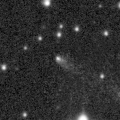
|
Now it is 18.5 mag (July 3, Michael Jager). It was expected to be observable at 16 mag in good condition in spring. But actually, it is fainter than predicted by 2-3 mag.
Date(TT) R.A. (2000) Decl. Delta r Elong. m1 Best Time(A, h)
July 23 20 57.76 10 58.8 0.951 1.883 146 19.1 0:57 ( 0, 66)
July 30 20 50.48 11 15.9 0.981 1.928 149 19.3 0:22 ( 0, 66)
|
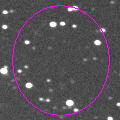
|
Now it is 20.3 mg (Oct. 30, 2021, Pan-STARRS 1, Haleakala). At the discovery, it was expected to be observable at 16-17 mag for a long time from 2020 to 2022. It had been lost for a long time since 2015, but the recent observations are found. Actually, it brigthens up to 20-21 mag at best.
Date(TT) R.A. (2000) Decl. Delta r Elong. m1 Best Time(A, h)
July 23 0 53.65 10 39.3 5.866 6.179 103 21.4 3:22 (314, 58)
July 30 0 54.24 10 51.6 5.777 6.194 109 21.4 3:29 (329, 63)
|
|
![]()
 C/2020 V2 ( ZTF )
C/2020 V2 ( ZTF ) C/2021 F1 ( Lemmon-PanSTARRS )
C/2021 F1 ( Lemmon-PanSTARRS ) 117P/Helin-Roman-Alu 1
117P/Helin-Roman-Alu 1 C/2020 K1 ( PanSTARRS )
C/2020 K1 ( PanSTARRS ) 45P/Honda-Mrkos-Pajdusakova
45P/Honda-Mrkos-Pajdusakova 9P/Tempel 1
9P/Tempel 1 C/2019 U5 ( PanSTARRS )
C/2019 U5 ( PanSTARRS ) 81P/Wild 2
81P/Wild 2 29P/Schwassmann-Wachmann 1
29P/Schwassmann-Wachmann 1 C/2021 T2 ( Fuls )
C/2021 T2 ( Fuls ) 116P/Wild 4
116P/Wild 4 41P/Tuttle-Giacobini-Kresak
41P/Tuttle-Giacobini-Kresak C/2020 Y2 ( ATLAS )
C/2020 Y2 ( ATLAS ) 19P/Borrelly
19P/Borrelly C/2018 U1 ( Lemmon )
C/2018 U1 ( Lemmon ) C/2022 L1 ( Catalina )
C/2022 L1 ( Catalina ) C/2021 A1 ( Leonard )
C/2021 A1 ( Leonard ) C/2021 Y1 ( ATLAS )
C/2021 Y1 ( ATLAS ) 118P/Shoemaker-Levy 4
118P/Shoemaker-Levy 4 61P/Shajn-Schaldach
61P/Shajn-Schaldach 119P/Parker-Hartley
119P/Parker-Hartley 152P/Helin-Lawrence
152P/Helin-Lawrence C/2020 H6 ( ATLAS )
C/2020 H6 ( ATLAS ) 246P/NEAT
246P/NEAT 327P/Van Ness
327P/Van Ness C/2020 J1 ( SONEAR )
C/2020 J1 ( SONEAR ) C/2022 N1 ( Attard-Maury )
C/2022 N1 ( Attard-Maury ) C/2020 F5 ( MASTER )
C/2020 F5 ( MASTER ) 107P/(4015) Wilson-Harrington
107P/(4015) Wilson-Harrington C/2019 F1 ( ATLAS-Africano )
C/2019 F1 ( ATLAS-Africano ) 44P/Reinmuth 2
44P/Reinmuth 2 C/2021 X1 ( Maury-Attard )
C/2021 X1 ( Maury-Attard ) 157P/Tritton
157P/Tritton P/2022 L3 ( ATLAS )
P/2022 L3 ( ATLAS ) 408P/2020 M7 ( Novichonok-Gerke )
408P/2020 M7 ( Novichonok-Gerke ) C/2020 O2 ( Amaral )
C/2020 O2 ( Amaral ) C/2020 F2 ( ATLAS )
C/2020 F2 ( ATLAS ) P/2022 C4 ( WISE-PanSTARRS )
P/2022 C4 ( WISE-PanSTARRS ) C/2021 S3 ( PanSTARRS )
C/2021 S3 ( PanSTARRS ) C/2019 O3 ( Palomar )
C/2019 O3 ( Palomar ) C/2021 C5 ( PanSTARRS )
C/2021 C5 ( PanSTARRS ) C/2019 T3 ( ATLAS )
C/2019 T3 ( ATLAS ) 100P/Hartley 1
100P/Hartley 1 C/2021 T4 ( Lemmon )
C/2021 T4 ( Lemmon ) 422P/2021 L1 ( Christensen )
422P/2021 L1 ( Christensen ) 99P/Kowal 1
99P/Kowal 1 C/2020 U4 ( PanSTARRS )
C/2020 U4 ( PanSTARRS ) C/2020 F7 ( Lemmon )
C/2020 F7 ( Lemmon ) (3200) Phaethon
(3200) Phaethon C/2020 U5 ( PanSTARRS )
C/2020 U5 ( PanSTARRS ) C/2021 QM45 ( PanSTARRS )
C/2021 QM45 ( PanSTARRS ) C/2020 T2 ( Palomar )
C/2020 T2 ( Palomar ) 395P/2020 H1 ( Catalina-NEAT )
395P/2020 H1 ( Catalina-NEAT ) C/2019 E3 ( ATLAS )
C/2019 E3 ( ATLAS ) 325P/Yang-Gao
325P/Yang-Gao C/2014 F3 ( Sheppard-Trujillo )
C/2014 F3 ( Sheppard-Trujillo )![]()

























































